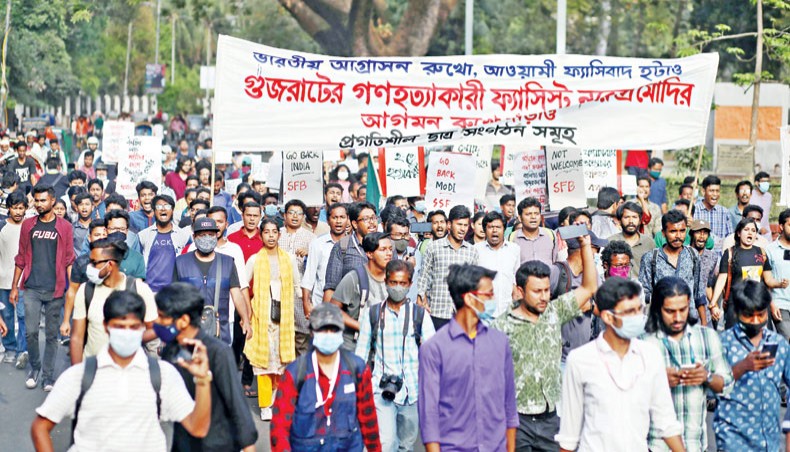
The boycott of Indian products in Bangladesh has gained significant momentum, spearheaded by Bangladeshi writer and activist Pinaki Bhattacharya, currently residing in France.
Triggered by India’s interference in the January 7 mock elections, Bhattacharya’s initial call for the boycott resonated strongly with the populace, surprising both the governments of Bangladesh and India, as well as the opposition party BNP.
Initially a solitary effort by Bhattacharya, the boycott, dubbed ‘India Out,’ has evolved into a widespread social movement, capturing the imagination of ordinary citizens who view it as a genuine form of protest.
While the government and ruling Awami League initially ignored the movement, their stance changed when the BNP expressed solidarity with it.
The government, led by figures like Obaidul Quader and Foreign Minister Hasan Mahmud, began to react, attempting to paint the boycott as a political ploy by the opposition to destabilize the market and raise prices.
However, Mahmud’s claims are refuted by the origins of the boycott, which stemmed from Bhattacharya’s individual initiative and garnered support organically from disillusioned citizens, particularly the youth disenchanted with the electoral process.
The boycott, though unorganized, has had tangible effects on Indian product sales, prompting supermarkets to offer discounts.
The Awami League’s discomfort with the widespread participation in the boycott is evident, with figures like Obaidul Quader resorting to mockery of the BNP.
The movement’s success, fueled by broad societal participation, has put pressure on the ruling party. Now, the ball is in the court of the people to respond to their leaders’ reactions.




